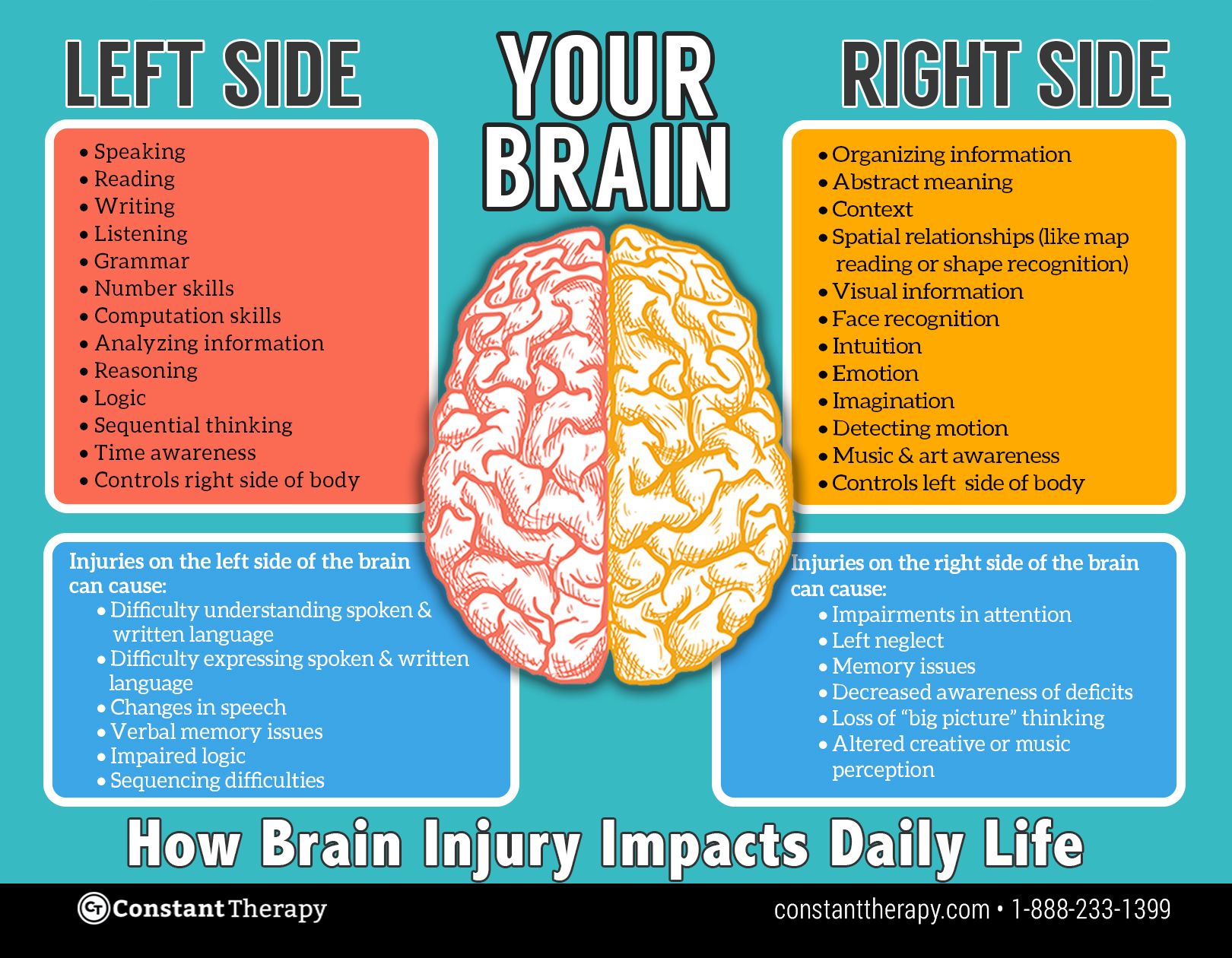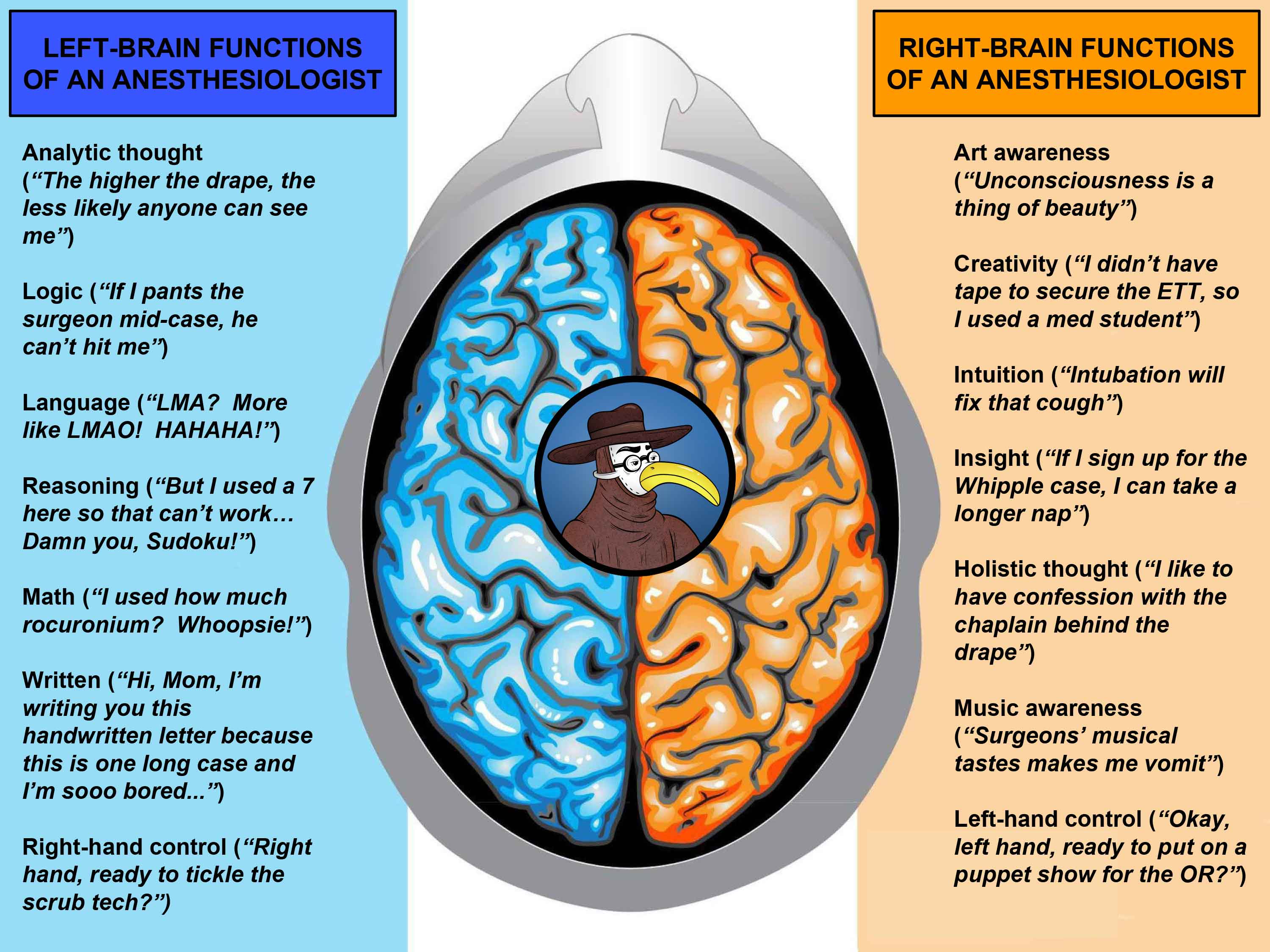Left Brain vs. Right Brain Dominance: The Surprising Truth Understanding the Myth of Left and Right Brain Dominance

Have you ever heard people say that they tend to be more of a right-brain or left-brain thinker? From books to television programs, you've probably heard the phrase mentioned numerous times or perhaps you've even taken an online test to determine which type best describes you. You've probably spotted at least a few infographics on Pinterest or Facebook claiming to reveal your dominant brain hemisphere.
claiming to reveal your dominant brain hemisphere.
You've probably also come across a few articles or books suggesting you can unleash the hidden creativity of right brain thinking or the deductive logic of left brain thinking.
People described as left-brain thinkers are told that they have strong math and logic skills. Those who are described as right-brain thinkers, on the other hand, are told that their talents are more on the creative side of things. Given the popularity of the idea of "right-brained" and "left-brained" thinkers, it might surprise you learn that this idea is just one of many myths about the brain.
What Is Left Brain - Right Brain Theory?
According to the theory of left-brain or right-brain dominance, each side of the brain controls different types of thinking. Additionally, people are said to prefer one type of thinking over the other.
For example, a person who is "left-brained" is often said to be more logical, analytical, and objective.
A person who is "right-brained" is said to be more intuitive, thoughtful, and subjective.
In psychology, the theory is based on the lateralization of brain function. The brain contains two hemispheres that each performs a number of roles. The two sides of the brain communicate with one another via corpus callosum.

The left hemisphere controls the muscles on the right side of the body while the right hemisphere controls those on the left. This is why damage to the left side of the brain, for example, might have an effect on the right side of the body.
Where Did the Idea of a Stronger Left-Brain or Right-Brain Come From?
So does one side of the brain control specific functions? Are people either left-brained or right-brained? Like many popular psychology myths, this one grew out of observations of the human brain that were then dramatically distorted and exaggerated.
The right brain-left brain theory originated in the work of Roger W. Sperry, who was awarded the Nobel Prize in 1981. While studying the effects of epilepsy, Sperry discovered that cutting the corpus callosum (the structure that connects the two hemispheres of the brain) could reduce or eliminate seizures.
However, these patients also experienced other symptoms after the communication pathway between the two sides of the brain was cut. For example, many split-brain patients found themselves unable to name objects that were processed by the right side of the brain but were able to name objects that were processed by the left-side of the brain.
Based on this information, Sperry suggested that language was controlled by the left-side of the brain.
Generally speaking, the left side of the brain tends to control many aspects of language and logic, while the right side tends to handle spatial information and visual comprehension.
So Is One Side of Your Brain Really Stronger Than the Other?
Later research has shown that the brain is not nearly as dichotomous as once thought. For example, research has shown that abilities in subjects such as math are strongest when both halves of the brain work together. Today, neuroscientists know that the two sides of the brain collaborate to perform a broad variety of tasks and that the two hemispheres communicate through the corpus callosum.
"No matter how lateralized the brain can get, though, the two sides still work together," science writer Carl Zimmer explained in an article for Discover magazine.
"The pop psychology notion of a left brain and a right brain doesn’t capture their intimate working relationship. The left hemisphere specializes in picking out the sounds that form words and working out the syntax of the phrase, for example, but it does not have a monopoly on language processing. The right hemisphere is more sensitive to the emotional features of language, tuning-in to the slow rhythms of speech that carry intonation and stress."
In one study by researchers at the University of Utah, more 1,000 participants had their brains analyzed in order to determine if they preferred using one side over the other. The study revealed that while activity was sometimes higher in certain critical regions, both sides of the brain were essentially equal in their activity on average.
“It’s absolutely true that some brain functions occur in one or the other side of the brain. Language tends to be on the left, attention more on the right. But people don’t tend to have a stronger left- or right-sided brain network. It seems to be determined more connection by connection," explained the study's lead author Dr. Jeff Anderson.
While the idea of right brain / left brain thinkers has been debunked, its popularity persists. So what exactly did this theory suggest?
The Right Brain
According to the left-brain, right-brain dominance theory, the right side of the brain is best at expressive and creative tasks. Some of the abilities popularly associated with the right side of the brain include:
Recognizing faces
Expressing emotions
Music
Reading emotions
Color
Images
Intuition
Creativity
The Left Brain
The left-side of the brain is considered to be adept at tasks that involve logic, language, and analytical thinking. The left-brain is described as being better at:
Language
Logic
Critical thinking
Numbers
Reasoning
So Why Do People Still Talk About Right-Brain, Left-Brain Theory?
Researchers have demonstrated that right-brain/left-brain theory is a myth, yet its popularity persists. Why? Unfortunately, many people are likely unaware that the theory is outdated. Unfortunately, the idea seems to have taken on a mind of its own within popular culture. From magazine articles to books to online quizzes, you are probably bound to see information suggested that you can unleash the power of your mind if you just discover which side of your brain is stronger or more dominant.
Today, students might continue to learn about the theory as a point of historical interest - to understand how our ideas about how the brain works have evolved and changed over time as researchers have learned more about how the brain operates.
While over-generalized and overstated by popular psychology and self-help texts, understanding your strengths and weaknesses in certain areas can help you develop better ways to learn and study. For example, students who have a difficult time following verbal instructions (often cited as a right-brain characteristic) might benefit from writing down directions and developing better organizational skills. The important thing to remember if you take one of the many left brain/right brain quizzes that you will likely encounter online is that they are entirely for fun and you shouldn't place much stock in your results.

Hi! I am a robot. I just upvoted you! I found similar content that readers might be interested in:
https://www.verywell.com/left-brain-vs-right-brain-2795005